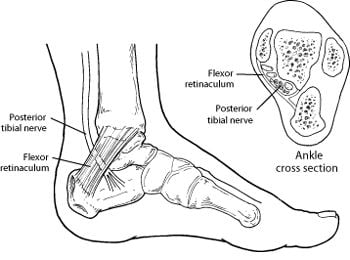Our Locations
Find us on the map
Hours of Operation
Our Regular Schedule
Vero Beach Location
Monday:
9:00 AM-5:00 PM
Tuesday:
9:00 AM-5:00 PM
Wednesday:
9:00 AM-5:00 PM
Thursday:
9:00 AM-5:00 PM
Friday:
9:00 AM-12:00 PM
Saturday:
Closed
Sunday:
Closed
Sebastian Location
Monday:
9:00 AM-5:00 PM
Tuesday:
9:00 AM-5:00 PM
Wednesday:
9:00 AM-5:00 PM
Thursday:
9:00 AM-5:00 PM
Friday:
9:00 AM-12:00 PM
Saturday:
Closed
Sunday:
Closed


 The tarsal tunnel is a narrow space that lies on the inside of the ankle next to the ankle bones. The tunnel is covered with a thick ligament (the flexor retinaculum) that protects and maintains the structures contained within the tunnel—arteries, veins, tendons, and nerves. One of these structures is the posterior tibial nerve, which is the focus of tarsal tunnel syndrome.
The tarsal tunnel is a narrow space that lies on the inside of the ankle next to the ankle bones. The tunnel is covered with a thick ligament (the flexor retinaculum) that protects and maintains the structures contained within the tunnel—arteries, veins, tendons, and nerves. One of these structures is the posterior tibial nerve, which is the focus of tarsal tunnel syndrome.